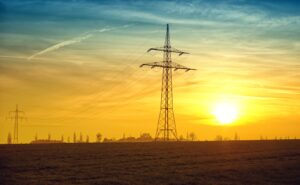Electricity supplies and emission targets at risk unless the World doubles its grid capacity
A first of its kind report, published by the International Energy Agency, has examined electricity grids around the world and found that 80 million km of power lines will need adding or replacing by 2040 in order for climate and energy goals to be met. And 80 million km is what we have now.
The current rate of growth of the global grid is around one million km a year, although over the last decade, a third of that growth has been in China.
Inevitably, the report, titled ‘Electricity Grids and Secure Energy Transitions’, highlights the delay that renewable projects face in connecting to the grid, and it is a worldwide problem exacerbated by Covid and Russia’s invasion of Ukraine.
Giving one example, pre-Covid 50 MVA power transformers had typical procurement times of 11 months, it’s now 18 months.
Furthermore the demand for grain-oriented electrical steel (GOES) – a crucial component of transformers – is growing (it is used in EV charging stations) while supply is falling (10% of the World’s GOES was supplied by Russia, pre-sanctions).
Another threat to the future distribution of power is the age of current grid systems. Insulation materials degrade and circuit breakers become less reliable in their ability to trip during faults. in advanced economies who electrified early, some of the electrical assets are over 50 years old.
The report found that between them, the USA, Spain, Brazil, Italy, Japan, the UK, Germany, Australia, Mexico, Chile, India and Colombia currently have grid connection requests totalling nearly 3TW of renewable energy.
This figure includes projects at the very beginning of their development but 1,500GW of this is at a late stage – a figure five times greater than the amount added in 2022.
In the UK, late-stage projects represent around 35% the amount of the current installed capacity. In Spain, building all solar and wind projects that have been granted grid clearance today would nearly triple the current installed capacity.
In some countries, the shortage of grid availability has stopped the development of renewables in its tracks. In the Netherlands, the grid is ‘full’ until work begins to increase it in phases between 2026 and 2029.
Another factor that is slowing down grid connection to new projects is that many of them are situated in remote areas and connection can take years to establish, emphasising the urgency of addressing these problem as soon as possible.
The report finds that cumulative CO2 emissions between 2030 and 2050 would be almost 60 billion tonnes higher due to a slower rollout of renewables, resulting in higher fossil fuel consumption: equivalent to the total CO2 emissions from the global power sector over the past four years.
Improving and expanding grid infrastructure in countries worldwide, it is suggested, will require stronger international collaboration. China aside, grid investment in emerging and developing economies has declined in recent years, despite robust electricity demand growth and ongoing efforts to meet energy access goals.
It would put the global temperature rise well above the Paris Agreement target of 1.5 °C, with a 40% chance of exceeding 2 °C.
IEA Executive Director Fatih Birol said: ‘The recent clean energy progress we have seen in many countries is unprecedented and cause for optimism, but it could be put in jeopardy if governments and businesses do not come together to ensure the world’s electricity grids are ready for the new global energy economy that is rapidly emerging. This report shows what’s at stake and needs to be done. We must invest in grids today or face gridlock tomorrow.
‘Ensuring the developing world has the resources it needs to build and modernise electricity grids is an essential task for the international community. By mobilising financing, providing access to technology and sharing best practices on policies, leading economies can help improve people’s lives, strengthen sustainable development and reduce the risks of climate change.’


















